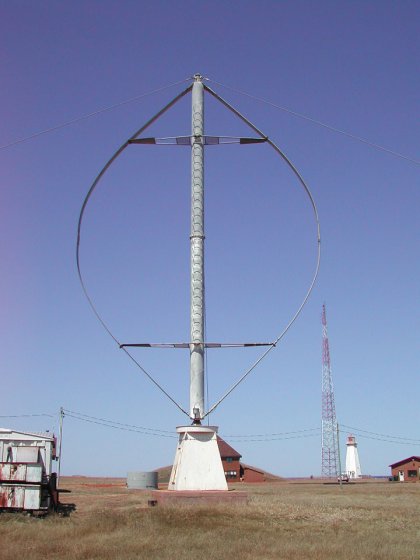Rising sea levels and escalating pollution levels has generated worldwide interest and has given rise to new wind turbines designs. Wind turbines mainly are of two types: vertical axis(VAWT) and horizontal axis(HAWT). HAWT are the most common type of wind turbines built across the world. VAWT is a type of wind turbine which have two or three blades and in which the main rotor shaft runs vertically. They are however less frequently used as they are not as effective as HAWT.
The main difference between the VAWT and HAWT is the position of blades. In HAWT, blades are on the top, spinning in the air and are most commonly seen while in VAWT, generator is mounted at the base of the tower and blades are wrapped around the shaft. The main advantage of VAWT over HAWT is it's insenstivity to wind turbines and therefore can be mounted closer to the ground making it effective for home and residential purpose. Vertical turbines spin on the vertical axis and comes in various shapes sizes and colors. It's movement is similar to a coin spinning on the edge.

Here are some of the advantages of VAWT:
- The turbine generator and gearbox can be placed lower to the ground making maintanence easier and lower the construction costs.
- The main advantage of VAWT is it does not need to be pointed towards the wind to be effective. In other words, they can be used on the sites with high variable wind direction.
- Since VAWT are mounted closer to the ground they are more bird friendly and down not dectroy the wildlife.
- VAWT quiet, efficient, economical and perfect for residential energy production, especially in urban environments.
- As the VAWT are mounted closer to the ground, less wind speed is available to harness which means less production of electricity.
- VAWT are very difficult to erect on towers, which means they are installed on base, such as ground or building.
- Another disadvantage of VAWT is the inefficiency of dragging each blade back through the wind.
VAWT's in general prodcues less energy as compare to HAWT mainly due to the additional drag that VAWT have - as they rotate into the wind. Both VAWT and HAWT might differ in their appearance and mode of operation, but they generate electricity by converting the wind energy into electrical energy by using a rotating shaft. In other words, wind turns the blades of the wind turbine around the turbines rotor. That rotor is connected to main shaft which in turn is connected to electric generator, which generates the electricity.
The most popular type of VAWT are: Darrieus Wind Turbine and Savonius Wind Turbine.
Darrieus Wind Turbine
Darrieus Wind Turbine are commonly knowmn as an "Eggbeater" turbine. It was invented by Georges Darrieus in 1931. A Darrieus is a high speed, low torque machine suitable for generating alternating current (AC) electricity. Darrieus generally require manula push therefore some external power source to start turning as the starting torque is very low. Darrieus has two vertically oriented blades revolving around a vertical shaft.
Savonius Wind Turbine
A Savonius vertical-axis wind turbine is a slow rotating, high torque machine with two or more scoops and are used in high-reliability low-efficiency power turbines. Most wind turbines use lift generated by airfoil-shaped blades to drive a rotor, the Savonius uses drag and therefore cannot rotate faster than the approaching wind speed. Savonius vertical axis wind turbine needs to be manually started. The slow speed of Savonius increases cost and produces less efficiency.


0 comments:
Post a Comment